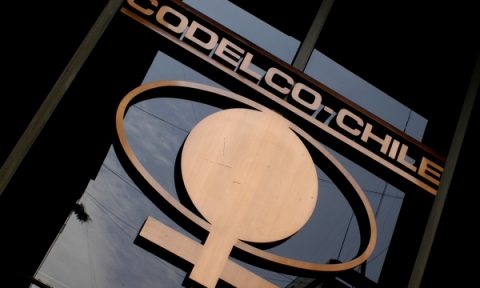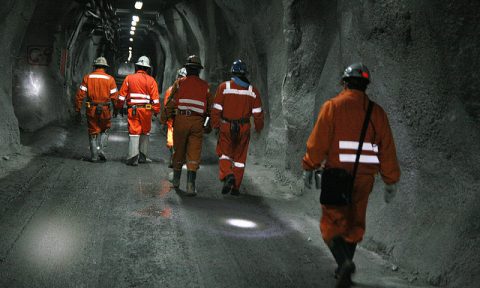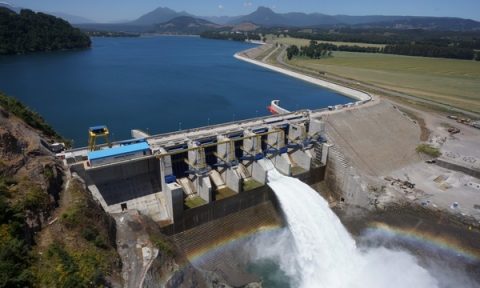Energy costs would rise to 130 U.S. $ / MWh in 2018 even in a normal year of rainfall
The price would climb 44% from 90 U.S. $ / MWh on average that exist in Chile based on a normal hydrological year
A deep analysis of the various scenarios that it is facing the country in electricity generation in the Central Interconnected System (SIC) performed by the transverse group of experts-composed by Sebastian Bernstein, Gabriel Bitran and Marcelo Alejandro Jadresic Tokman- in the study commissioned by the Confederation of Production and Commerce (CPC) and which in July 5 was given by the leader of the union leadership, Andrés Santa Cruz, and the general manager of the company, Fernando Alvear,to the Minister of Energy, Jorge Bunster.
The report specifically considers the period 2013-2020, and proposes measures to ensure an economic supply of demand in those eight years. It also highlights that with currently operating plants and in advanced construction stage it can meet the demand and its growth only until 2016.
To supply the aftermath, experts warn that the situation is uncertain and prices can rise, even considering the early start of some generation projects that are considered likely to materialize.
Specifically, the CPC study suggests that due to the bidding block by energy distribution companies to be held later this year, conditions may be established for existing plants now operating with diesel oil to take part in that process. These plants could hire Liquefied Natural Gas (LNG) in the long term insofar to be awarded supply contracts with clients like the distributors, which would add to the SIC about 700-1000 MW in base.
The analysis considered baseline scenario for our country – and therefore the most likely to materialize- that Nueva Renca, Nehuenco 1 and Nehuenco 2 plants do not have LNG, the hydroelectric plants Alto Maipo, Los Cóndores and Ñuble begin operating in 2018, 2019 and 2020 respectively, and that the coal plant Santa Maria II and SIC-SING interconnection enter in service by 2019.
Given these conditions, the expected marginal costs of energy of the system (average of all hydrology) will grow from 2016 reaching 130 U.S. $ / MWh in 2018, figure compares to the current cost of 90 U.S. $ / MWh if 2013 were a normal hydrological year. This implies a jump of 44% in five years.
However, due to the current stage of drought, the marginal cost is slightly over 200 U.S. $ / MWh.
In the scenario in which all projects fall behind one year, the average marginal costs of energy could reach 156 $ / MWh in 2018, amount that would rise to 250 U.S. $ / MWh compared to a dry year.
Price projections improve considerably if we consider that, for example, Nueva Renca and Nehuenco 2 Plants will have LGN available since 2015, situation in which- although all plants and the interconnection line will fall behind in a year, average marginal cost (all hydrology) would never exceed 118 U.S. $ / MWh. According to the study, this shows the importance of increasing base generation from LNG, which is only possible if simultaneously electricity sales contracts are achieve paired with LNG purchase contracts.
For CPC, the opportunity to achieve this result is the ongoing tender for the supply of energy blocks distributors, because it requires at least two years to establish convenient LNG supply contracts.
Difficulties
The study also addresses the particular difficulties to make projects materialize and the small number of new base plants that are starting construction in the SIC, leading to this system to face periods of “tightness”.
In this regard, details the 14 initiatives that have not materialized, although, in the case of Los Robles, ERA, Barrancones and Farellones, the project presentation in the System of Environmental Impact Assessment (SEIA) was in 2007 (see graphic).
The main obstacle has been the opposition of various groups, and the study confirms that this rejection has resulted both in administrative and judicial resources.
Hidroaysén, Castilla and Los Robles are the investments that have faced more rejection, to stop their construction with 23 and 19 resources respectively.
According to this scenario, the CPC president, Andrés Santa Cruz, states that Chile faces an energy shortage situation not for lack of interest in investing: “Flesh projects is becoming more difficult and expensive, due to the growing environmental and citizen opposition they are facing “he says.
That’s why the leader insists in the need of reaching a broad social and political agreement to promote an agenda towards identifying shortly efficient basis generation plant projects. “Only in this way we will ensure sustainable development of the economy, safeguarding the environment and ensuring an equitable distribution of costs and benefits in society, “he says.
Source: El Mercurio












